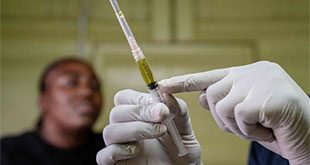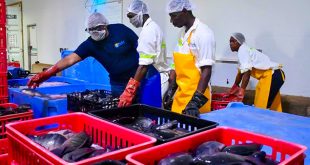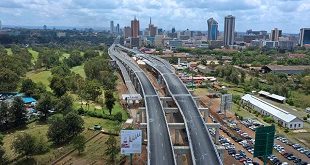
By Julius Businge
New scheme favouring technology, medicine, science education starts
When The Independent first wrote a story about the student loan scheme in August this year, a reader, Vitas Muhairwe, posted a comment on our online version:
“Am not seeing the possibility of this loan benefiting students from needy background, who have tried hard to make it to campus but have failed. Unless we comb corruption out of our minds and we give this money to the needy…the money will land into hands of the sons and daughters of the able Ugandans.” Muhairwe’s comment continues; “these are boys and girls highly connected and so will have potential to land jobs and pay the loan in time. The other disadvantaged group will remain disadvantaged unless the process of giving out loans and job offers become fair.
Muhairwe’s fears could be similar to those of Guleet Ngabijai, 21, when he applied for the students’ loan scheme that commenced this academic year (2014/2015).

“I did not have hope in the scheme because I learnt of it late through a relative of mine who stays in Kampala,” Ngabijai told this reporter when he met him at the Higher Education Students’ Financing Board (HESFB) offices in Kampala a few days after the official list was released. The excited Ngabijai said, “God did not let me down.”
It was Sept. 8 in the morning hours when he got the message on his mobile phone.
“Congratulations you have been awarded a student’s loan to pay for your university education by HESFB. Get details from our (HESFB) website.”
Ngabijai was lucky; 840 students who applied did not get the messages after failing to qualify.
Official figures released by government on Sept. 8, indicate that 2109 students applied for the scheme, but only 1269 succeeded, representing 60%, got the loans. That is about 26% more than the 1000 students per year earlier indicated to get loans. The government has put aside a kitty of Shs6 billion (Approx. US$2.5 million) to kick-start the programme with plans to grow it to Shs16 billion. Awards to students vary by course offered and by admitting university. However, it is estimated that each student will get about Shs4 million per year.
Figures show that only 283 females [22%] scooped slots in the new scheme compared to 986 [77.7%] males. Male applicants were more than females.
Ngabijai qualified for Electrical Engineering at Kampala International University (KIU) after scoring 15 points out of 19 in Physics, Economics and Mathematics at the government aided Luzira S.S.S in Kampala. He had earlier performed well at Pakwach S.S.S for his ‘O’ level.
The news found Ngabijai in his rural village Wijadwong in West Nile, Nebi district.
“As you can see, if it was not government support I would not have reached where I am,” he says. He says his parents were born in 1940s, are subsistence farmers, and have little to support his education.
“Now it is upon me to work hard at University,” he says, “God will still help me pay the loan.”
Ngabijai is praying to God to help him meet his loan obligations even before finishing the course.
Queries raised
However, despite such excitement among the awarded students, there are those raising queries regarding the award criteria.
Top on the list of queries is why Kampala International University (KIU), the private university of controversial city businessman Hassan Basajjabalaba got most slots. Critics say KIU, which is a new entrant in the education system compared to public universities like Makerere and Kyambogo , should not have taken the largest number of loan students. There are also queries about why there are fewer females than males, and why some districts received more slots than others, while others missed completely.
Makerere University which has about 40,000 students has traditionally admitted the biggest number of students on any programme and Vice Chancellor Ddumba-Ssentamu told The Independent that he would have been happy with more students under the loan scheme.
“It is not true that Makerere was not willing to admit the largest number under the scheme,” Sentamu said. “But the selection was done by government.”
Michael Wanyama, the director of HESFB says, however, there was no favoritism because the Board considered each participating university based on the students who had applied and got admitted. He says KIU got the highest number of applicants; 611, compared to Makerere, 413, and Kyambogo, 281. He says in the end 67% of KIU applicants were successful compared to Makerere 55% and Kyambogo 56%.
KIU has about 12,000 students, 3000 of who are at its Ishaka Campus in Bushenyi District, Western Uganda. In 2009, the government allocated Shs4 billion to the Ishaka Campus which has a medical teaching hospital. The government has also paid salaries of lecturers at KIU Ishaka. Now KIU could be getting another Shs2 billion per year into its coffers under the students loan scheme.
Observers point at the close links between the proprietor of KIU, Basajjabalaba and President Yoweri Museveni. Basajjabalaba is the chairman of the Entrepreneurs League of Museveni’s NRM party. Previously, Museveni has ordered the central bank to clear his debts.
“On our side we are satisfied with what we did,” HESFB Executive Director, Michael Wanyama told The Independent in an interview, “any new scheme comes along with challenges but there is always room for improvement.”
Selection criteria
Wanyama said the loans have been awarded to needy students from all corners of Uganda. In awarding these loans, Wanyama said they had a deliberate effort to ensure equity, regional balance, gender balance and socio-economic balance in line with the HESFB Act, 2014.
Wanyama said the Board hired a consultant and all applicants were subjected to a uniform score card which considered proxy indicators including; academic progress, previous school fees payment history, orphanage, amount of loan required, parents life status, family size special needs, family income levels, parents’ level of education, use of utilities in the home, access to medical care, and the expenses related to accommodating the family. The Independent did not see the real outcome of the consultant’s work. But Wanyama said proxy indicators show needier applicants score higher points than their less needy counterparts and consequently the ones who scored higher points were awarded the loans.
He admitted that the Board did not have ample time to visit the homes of the applicants because of the delays to release lists of the private students by public universities together with delays in distributing admission letters. However, he said, they are sending a team to verify the information given by the applicant and whoever gets faulted, their loan will be cancelled. “We are going to sample 75 percent of successful applicants,” he said, adding but I think we did a good job because we have only received two complaints which we are handling.
Applications were received from 108 districts out of 112 districts. Those that did not have applicants included Amudat, Bulisa, Buvuma and Nakapirprit.
Only students of the selected 13 accredited universities including Makerere, Kyambogo, Mbarara, Busitema, Gulu, Muni, Nkumba, Ndejje, Bugema, and Nkozi universities were considered. Others are Islamic University in Uganda, Kampala International and Uganda Christian University. The range of the loan amount is Shs 1.75 million being the lowest annual loan amount for B. Science in Education at Gulu University while the highest is Shs 6.782 million for Bachelor of Engineering at UCU. The average unit cost for the students being supported is Shs 4.266million this academic year.
Some of the top districts that benefited from the scheme include Wakiso from Central [with 51 successful applicants out of 86], Ntungamo from Western [with 33 out of 53], Mukono in Central [with 25 out of 45], Mbarara [with 36 out of 59], and Kasese from Western [with 34 out of 52]. Districts such as Moroto, Kotido, Kiryandongo, Zombo, Kabongo got only one successful applicant out of one or two applicants.
Wanyama said the loans would not cover retakes, urging students to read hard and attain high grades.
The loans cover tuition fees, functional fees, research obligations and appliances and aids for people with disability. In the future, Wanyama said, the scheme could also consider giving students more money for accommodation and meals when funds are sufficient.
The loan scheme was introduced to increase the number of needy students accessing higher education. Some Shs 5 billion was earmarked for pioneer students this year.
Loan recovery
Government has put an interest of 7% on the loans. According to the Higher Education Students Financing Act, 2014, repayment of the loan shall be charged on the income of the person who received the loan. Repayment starts a year after the beneficiary has completed studies. The Act provides for a six-month jail sentence or a fine of at most sh1m to beneficiaries who try to default after graduating. While launching the scheme at Kyamgogo University in May this year, President Museveni urged needy bright students to take the loans but cautioned them against defaulting. He said defaulters will be arrested. Whether the students will manage to pay or not is another issue. But Former Prof. Patrick Rubaihayo of Makerere University told The Independent that a successful loan scheme is one that considers those applicants who will immediately after school, be able to get a job and pay back the loan. “Putting them in prison cannot help them pay the loan,” Prof. Rubaihayo said.
He argued that it does not matter which university gets most money as long as it is used to educate Ugandan students.
“Even if the largest number of students had gone to a public university or another private university, it would still remain tax payers’ money,” he said, adding all universities employ people and that they cannot survive without students. “Actually the money goes back to the tax payers,” he added.
On the quality of degrees from the various universities, Prof. Rubaihayo said all participating universities including KIU are chartered.
“That should not be an issue,” he said.
KIU’s deputy director in charge of marketing Abdul Nasser Kankuriramu said the university has one of the best hospitals in Uganda (KIU Teaching Hospital).
“Go to Mulago (National referral Hospital) and ask people about the quality of our students, they will tell you that they are the best,” he said.
He said the university admits students with two principle passes as recommended by the National Council for Higher Education (NCHE). This is different from public universities whose cutoff points are relatively higher and limit the number of students qualifying for Science Courses.
When asked to comment about the fact that they got the largest number of students on the scheme, Nasser said: “We have all the facilities to even accommodate more.”
The least expensive science course at KIU is B. Science with Education which goes for Shs 820, 000 and the most expensive is B. medicine and surgery which cost Shs 5 million per semester; including all the apparatus required. All science courses are offered at the University’s Western Campus.
Makerere Univerity’s Dumba-Sentamu told The Independent on the sidelines of a police event at Makerere on Sept. 16 that he thinks the loan scheme should be diversified to cover even arts courses. It is a view held by many, including some MPs who took exception to President Yoweri Museveni’s strident advocacy for science subjects.
The MPs are asking government to produce empirical evidence showing how it jumped to a conclusion that “humanity courses are useless”.
Amidst the uproar, Education Minister Jessica Alupo has said the government plans to increase the loan scheme budget to be able to fund arts students, diplomas, and other courses.
 The Independent Uganda: You get the Truth we Pay the Price
The Independent Uganda: You get the Truth we Pay the Price





